SOLID WASTE TREATMENT LABORATORY
I. OVERVIEW
I.1 Introduction
Solid waste pollution is a pressing issue in Vietnam, affecting both urban and rural environments. Rapid urbanization, population growth, and increased consumption have led to significant challenges in managing waste effectively. In urban areas, the high density of waste often overwhelms existing disposal systems, resulting in pollution and health hazards. In rural areas, inadequate waste management can contaminate soil and water resources, impacting agriculture and local communities.
To address these challenges, the Solid Waste Treatment Laboratory was established in 2008 as part of the College of Environment and Natural Resources. This laboratory focuses on developing innovative technologies and methods for solid waste treatment and management, taking into account several critical factors:
1. Waste Quantity: Understanding the volume of waste generated helps in planning effective management strategies. The lab studies trends in waste generation to optimize treatment processes.
2. Waste Characteristics: Different types of waste have distinct properties that affect how they can be treated. The lab analyzes the composition of waste streams to identify suitable treatment technologies.
3. Physical Properties: Characteristics such as density, moisture content, and particle size are crucial for selecting appropriate treatment methods, whether through mechanical, biological, or thermal processes.
4. Composition: Detailed composition analysis helps in understanding the proportions of organic, inorganic, and recyclable materials, guiding effective sorting and recycling strategies.
The lab conducts research across various waste categories:
· One-Waste: Focused on specific types of waste materials, developing tailored solutions for treatment and recycling.
· Plastic Waste: Given the environmental impact of plastic pollution, the lab explores innovative recycling methods and alternatives to reduce plastic waste.
· Bio-Waste: Research in this area aims to improve composting techniques and convert organic waste into valuable products, such as fertilizer.
· Sewage Sludge: This involves developing treatment options to safely manage sewage byproducts, transforming them into usable resources while minimizing environmental impact.
· Municipal Solid Wastes: Comprehensive research aims to enhance overall waste management practices for household and commercial waste, promoting better collection, sorting, and recycling efforts.
Laboratory location: The Solid Waste Treatment Laboratory is situated on the fifth floor of the Research Laboratory Complex, specifically in rooms RLC 5.16 and RLC 5.17. These facilities are designed to enhance students' analytical skills and serve as a teaching space. They provide valuable resources for both undergraduate and postgraduate students, as well as academic staff, who engage in various dissertation and research projects. This collaborative environment fosters innovation and practical learning in solid waste treatment and management, preparing students for future challenges in environmental science.
I.2. Essential functions
Teaching:
The Solid Waste Treatment Laboratory plays a crucial role in practical education, providing extensive hands-on learning opportunities for students at all levels. This lab is primarily used for practical teaching and individual data collection for dissertations, allowing students to apply theoretical knowledge from their lectures to real-world situations.
Students consistently express positive feedback about their laboratory experiences, highlighting how this practical component enhances their learning and develops essential skills.
The lab supports several key courses, including:
1. Waste Management and Treatment Internship: This course provides students with direct experience in managing and treating various types of waste.
2. Solid Waste and Exhaust Gas Treatment Internship: Students learn about techniques for treating solid waste and managing exhaust gases, focusing on pollution control and sustainability.
3. Solid Waste and Hazardous Waste Management: This course addresses the complexities of managing both regular and hazardous waste, emphasizing regulatory compliance and safety.
4. Environmental Materials: Students explore the properties and applications of materials used in environmental management, fostering an understanding of sustainable practices.
Through these courses, the lab not only reinforces theoretical concepts but also equips students with practical skills necessary for careers in environmental science and waste management.
Research:
ll lab staff actively supervise both undergraduate and postgraduate students conducting independent research within the Department of Environmental Engineering. This hands-on guidance helps students navigate their projects effectively and enhances their learning experience.
Additionally, the laboratory's equipment is available for research activities not only for the Environmental Engineering Department but also for other departments and external users. This collaborative approach fosters interdisciplinary research and maximizes the use of the lab's resources, contributing to a broader impact on environmental studies and solid waste management.

Duties:
The Solid Waste Treatment Laboratory primarily serves academic staff, as well as undergraduate and postgraduate students. It is well-equipped to support various research activities and dissertation projects within the field of solid waste management and treatment.
In addition to its research functions, the laboratory plays a vital role in teaching students enrolled in the Environmental Engineering and Environmental Management programs. This integration of research and teaching ensures that students gain practical, hands-on experience, reinforcing their theoretical knowledge and preparing them for future careers in Environmental Engineering.
- OPERATIONAL CAPACITY II.1 Main equipments
The Lab is equipped with the follwing equipments:
| No. | Equipment | Photo | Analytical ability |
| 1 | Kimo TR 62 portable thermometer |  |
The Kimo TR 62 portable thermometer is engineered for precise temperature measurements across different environments. |
| 2 | PMS-714 Soil Moisture Meter | 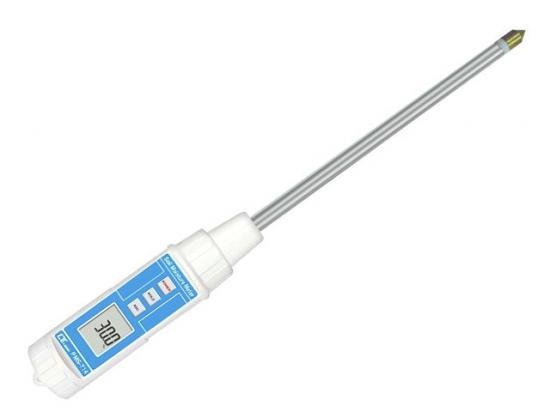 |
PMS-714 Soil Moisture Meter is designed to measure the moisture level of soil and similar materials, this all-in-one digital soil meter features a measurement range of 0% to 50% moisture content with 0.1% resolution |
| 3 | BIOGAS 5000 Gas Analyzer | 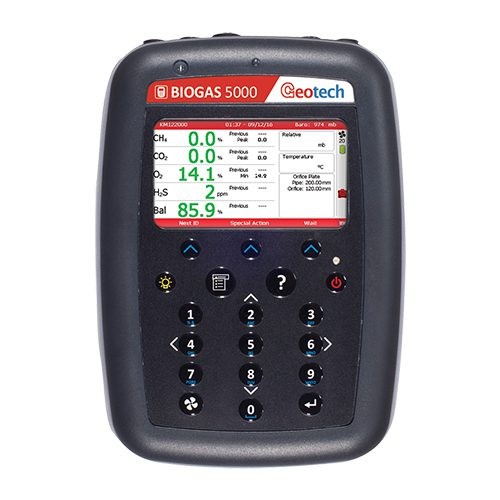 |
The BIOGAS5000 is a portable instrument for analyzing anaerobic digester gas, measuring CH4, CO2, O2, and optional H2S gas, along with various pressures. It provides accurate gas composition and flow measurements wastewater treatment facilities. |
| 5 | InKjel 625 TCP Kjeldahl Analyzer | 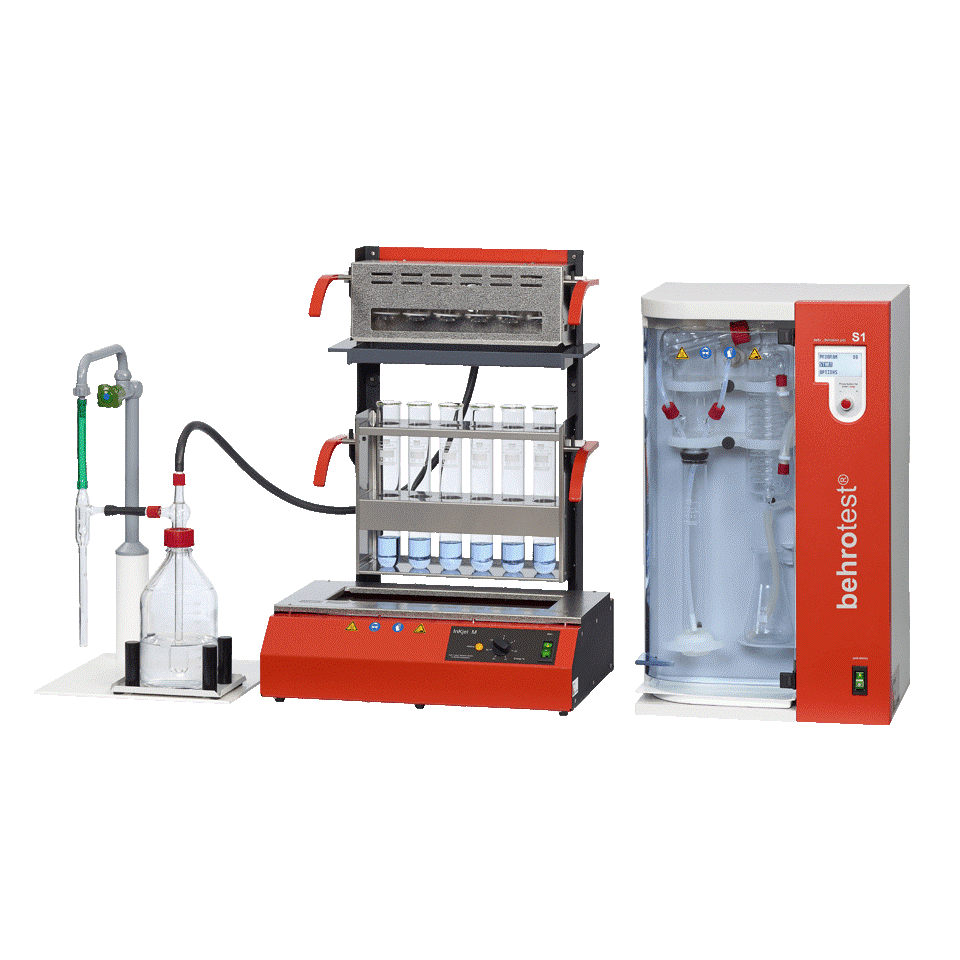 |
The InKjel 625 TCP Kjeldahl Analyzer, when paired with a programmable rapid infrared digestion system for six 250 mL reaction vessels, offers a comprehensive solution for nitrogen analysis. This robust setup streamlines the Kjeldahl method, enabling the simultaneous processing of multiple samples |
| 6 | Precisa XM 60-HR moisture analyzers | 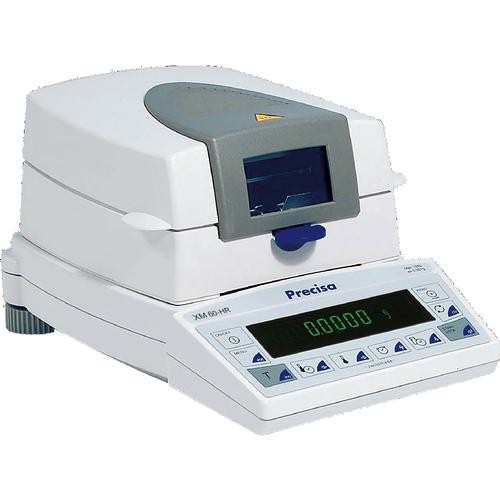 |
Precisa XM 60-HR moisture analyzers are simple to use yet great for moisture analysis applications that are more complex. It offers multiple options for heat rate or ramp, endpoint or stop, and temperature and has memory for to 20 drying methods. |
| 7 | Ohaus AX224 Analytical Balance |  |
The Ohaus Adventurer AX224 features a capacity of 220 grams and offers exceptional readability of 0.0001 grams (0.1 milligram). This precision makes it ideal for high-accuracy weighing applications in laboratories and industrial settings. |
| 8 | MEMMERT UN110 Universal oven | 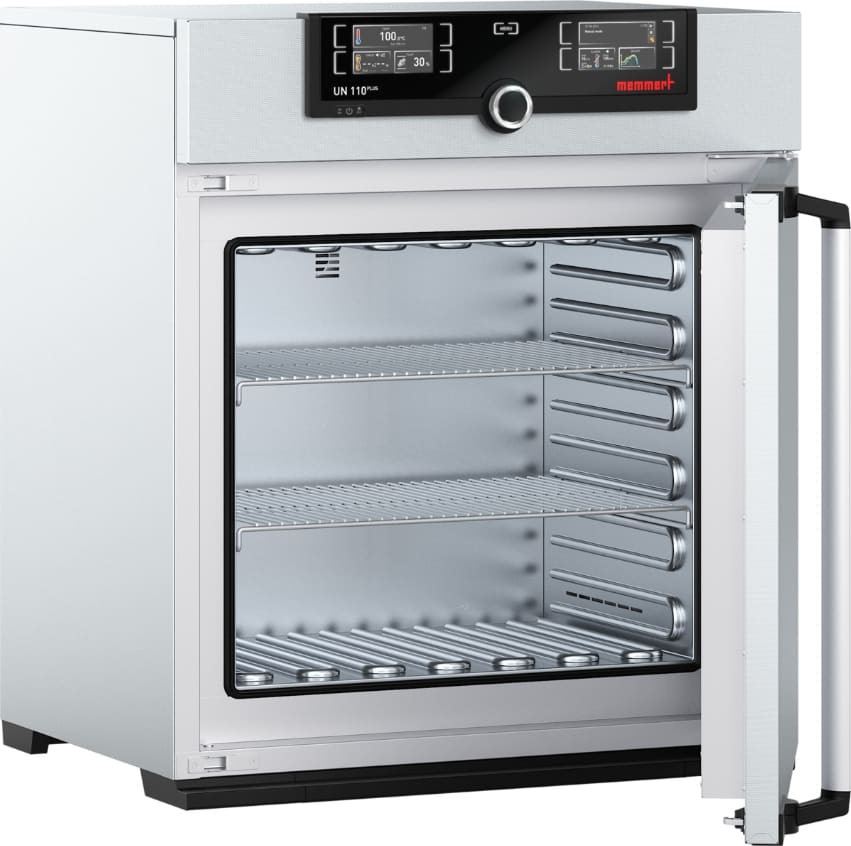 |
The MEMMERT UN110 Universal Oven is designed for drying, heating, and sterilization in laboratory and industrial settings. It operates from ambient to 300°C, ensuring versatility for various heating tasks, while its forced air circulation system provides consistent temperature distribution throughout the chamber. |
| 9 | HAVER EML 200 Pure – Analytical sieve machine | 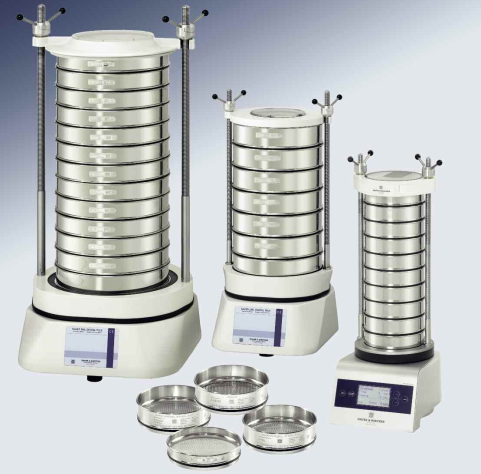 |
The HAVER EML 200 Pure is a test sieve shaker for sieves up to 203 mm, capable of dry sieving up to 3 kg of bulk material. Designed by Haver & Boecker, it ensures precise and efficient particle size analysis across various industries. |
| 10 | Euro Vector EA3100 Elemental Analyzers | 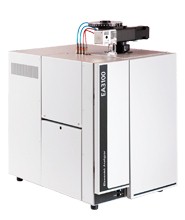 |
The Euro Vector Elemental CHNSO Analyser is a sophisticated instrument designed for comprehensive elemental analysis, capable of determining the content of Carbon (C), Hydrogen (H), Nitrogen (N), Sulphur (S), and Oxygen (O) in various substances. |
| 11 | Ika C6000 Calorimeter | 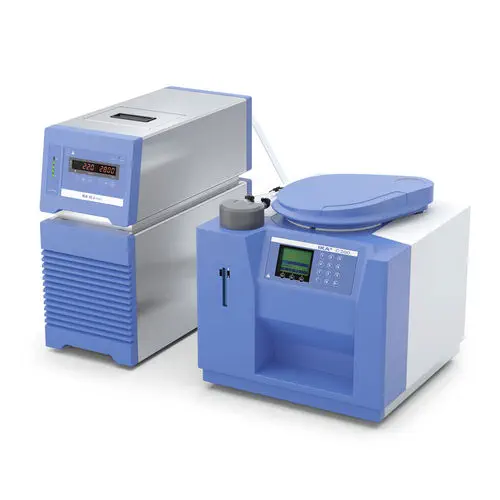 |
IKA's C6000 Calorimeter packages feature classical adiabatic and isoperibol modes for determining caloric values |
| 12 | Analytik Jena NovAA 800D, Atomic Absorption Spectroscopy | 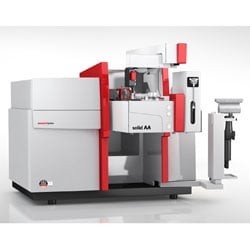 |
The Analytik Jena NovAA 800D is a cutting-edge atomic absorption spectrometer (AAS) optimized for precise heavy metal analysis. It features automatic atomizer change for flame, hydride, and graphite furnace technologies. |
| 13 | NABERTHERM LHT 04/17 High-Temperature Furnace | 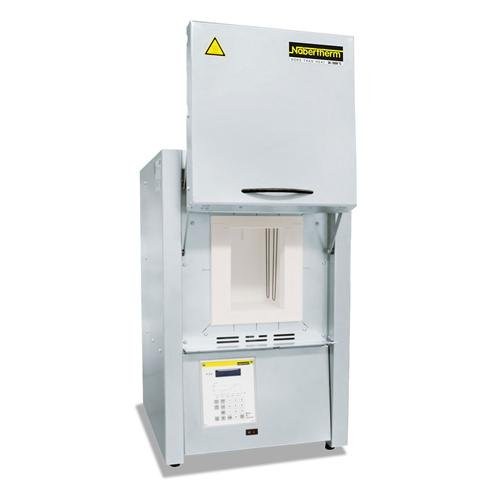 |
The Nabertherm high-temperature furnace with MoSi2 heating elements is designed for laboratory and industrial use, reaching temperatures up to 1800°C. |
II.2 Analytical Capabilities
Method of determining the composition of solid waste according to TCVN 9461:2012 (ASTM D5231-92)
II.3 Manpower
Lab manager: Ass. Prof. Do Thi My Phuong
Phone: 0919.188.834
Email: This email address is being protected from spambots. You need JavaScript enabled to view it.
III. RESEARCH ORIENTATION and CAPACITY BUILDING
The Laboratory researches address five main issues:
- Treatment and recycling of waste biomass;
- Production of functional biomaterials from waste biomass;
- Waste composition analysis;
- Analysis of hazardous substances in solid waste;
- Management and risk control of solid waste.
Publication:
- Petersen, H. I., Lassen, L., Rudra, A., Nguyen, L. X., Do, P. T. M., & Sanei, H. (2023). Carbon stability and morphotype composition of biochars from feedstocks in the Mekong Delta, Vietnam. International Journal of Coal Geology, 104233.
- Loc, N. X., Tuyen, P. T. T., Mai, L. C., & Phuong, D. T. M. (2022). Chitosan-modified biochar and unmodified biochar for methyl orange: Adsorption characteristics and mechanism exploration. Toxics, 10(9), 500.
- Do Thi My Phuong, N. T., Thao, T., & Loc, N. X. (2023). Preparing Shrimp Shell-Derived Chitosan with Rice Husk-Derived Biochar for Efficient Safranin O Removal from Aqueous Solution. Journal of Ecological Engineering, 24(1), 248-259.
- Phuong, D. T. M., & Loc, N. X. (2022). Rice straw biochar and magnetic rice straw biochar for safranin O adsorption from aqueous solution. Water, 14(2), 186.
- Loc, N. X., Thanh, T. D., & Phuong, D. T. M. (2022). Physicochemical properties of biochar produced from biodegradable domestic solid waste and sugarcane bagasse. International journal of recycling organic waste in agriculture.
- Nguyen, L. X., Do, P. M. T., Phan, T. T. T., Nguyen, C. H., & Downes, N. K. (2022). Removal of anions PO43-and methyl orange using Fe-modified biochar derived from rice straw. Iranian Journal of Chemistry and Chemical Engineering.
- Phuong, D. T. M., Loc, N., & Miyanishi, T. (2019). Efficiency of dye adsorption by biochars produced from residues of two rice varieties, Japanese Koshihikari and Vietnamese IR50404. Water Treat, 165, 333-351.
- Do, P. T., Ueda, T., Kose, R., Nguyen, L. X., Okayama, T., & Miyanishi, T. (2019). Properties and potential use of biochars from residues of two rice varieties, Japanese Koshihikari and Vietnamese IR50404. Journal of Material Cycles and Waste Management, 21, 98-106.
- Nguyen, L. X., Do, P. T. M., Nguyen, C. H., Kose, R., Okayama, T., Pham, T. N., ... & Miyanishi, T. (2018). Properties of Biochars prepared from local biomass in the Mekong Delta, Vietnam. Bioresources, 13(4), 7325-7344.


